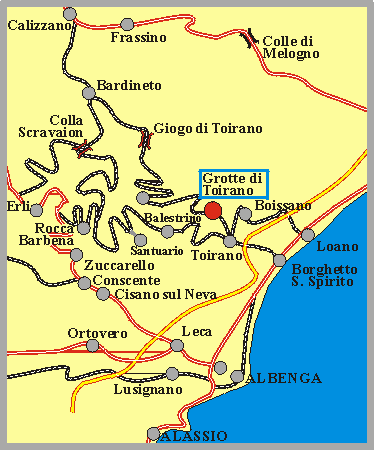 In order to understand the present day Levanto, we must behave like we do with the people we love: learn its story, give a historical depth to the landscape of today and learn about the vocations and the identities that have followed one another in time.
In order to understand the present day Levanto, we must behave like we do with the people we love: learn its story, give a historical depth to the landscape of today and learn about the vocations and the identities that have followed one another in time.We can distinguish at least three of them:
- the feudal and agricultural-pastoral identity of the Bardellone mountain, which is linked to the contrai of the passes and the Communications by land, as well as to the centres of Ceula and Zolasco that have now vanished;
- the communal and mercantile-maritime identity, which is centred around the village of Levante and experienced through a complete devotion to the Republic of Genoa but not without feeling the great importance of the agricultural economy: from the charm of the agriculture of the villa to the constellation of the rural centres in the valley;
- the tourist identity, which takes piace in two different periods and according to two different models: a type of tourism reserved for the élite (until the 1950's) and one for the mass (after the 1950's).

The first mode! offers, especially to tourists coming from abroad, the refined image of a sub-stantially rural Levante, placed in the middle of a rural landscape that, according to the impressions of the first tourists, was considered a great garden, a sort of paradise on earth.
The second model, instead, offers the image of a Levante) that turns its back onte its territory and concentrates on the coastal plain and on the Ghiararo (where many gardens tend to disappear), on the beach and on the sea.
This is the model that creates a split not only with regard to the past but with the land as well. The previous models had, in fact, developed without any discontinuity and without any real imbalance between thè coast and the hinterland, between the Village and the Vailey, between urban-isation and territory.
The colonisation of tourists forces to comply with urban models and styles that have no connection with the environment and it trans-forms thè rural landscape and the traditional seats linked to it into mere building ground.
This is what takes piace in thè area around the village of Levante, where the building pressure, especially during thè 50's and 70's, is greater, while the settlement System of the Vailey is stili able to hold on to its urban configuration.
Today, this phase has been overcome: we look to the history and to the future of Levante holding on to ideas and principles that acknowledge economie value to the landscape, to cultural-historical territory, to its historical identity.

Custom Search
If you liked this article, subscribe to the feed by clicking the image below to keep informed about new contents of the blog:












 The Toirano Caves (Italian: Grotte di Toirano) are a remarkable karst cave system located in the municipality of Toirano, in the province of Savona, Liguria.
The Toirano Caves (Italian: Grotte di Toirano) are a remarkable karst cave system located in the municipality of Toirano, in the province of Savona, Liguria.

 The height of the tower is 55.86 m (183.27 ft) from the ground on the lowest side and 56.70 m (186.02 ft) on the highest side. The width of the walls at the base is 4.09 m (13.42 ft) and at the top 2.48 m (8.14 ft). Its weight is estimated at 14,500 metric tons (16,000 short tons). The tower has 296 or 294 steps; the seventh floor has two fewer steps on the north-facing staircase. Prior to restoration work performed between 1990 and 2001, the tower leaned at an angle of 5.5 degrees, but the tower now leans at about 3.99 degrees.This means that the top of the tower is 3.9 metres (12 ft 10 in) from where it would stand if the tower were perfectly vertical.
The height of the tower is 55.86 m (183.27 ft) from the ground on the lowest side and 56.70 m (186.02 ft) on the highest side. The width of the walls at the base is 4.09 m (13.42 ft) and at the top 2.48 m (8.14 ft). Its weight is estimated at 14,500 metric tons (16,000 short tons). The tower has 296 or 294 steps; the seventh floor has two fewer steps on the north-facing staircase. Prior to restoration work performed between 1990 and 2001, the tower leaned at an angle of 5.5 degrees, but the tower now leans at about 3.99 degrees.This means that the top of the tower is 3.9 metres (12 ft 10 in) from where it would stand if the tower were perfectly vertical.






